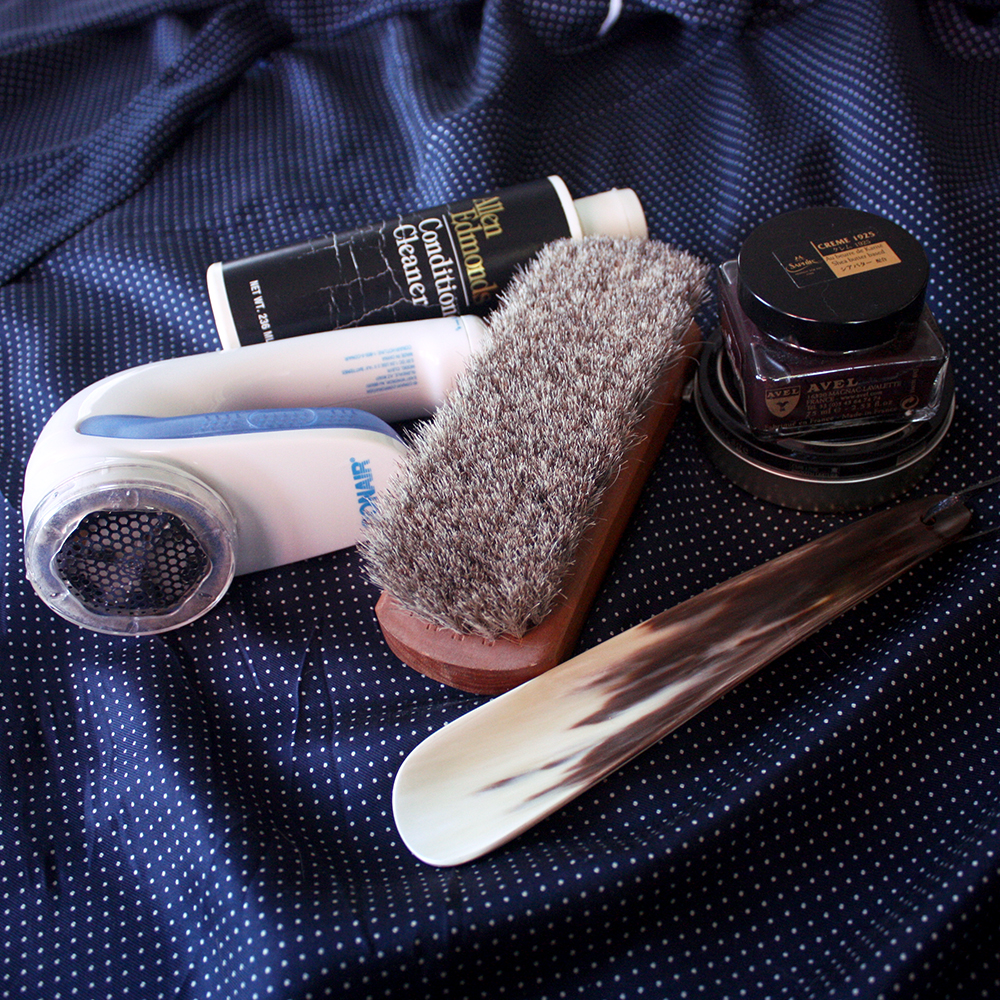
In the last ten years, as men’s style has grown and evolved, the idea of what it means to be well-dressed has become very personal, contextual, and even nebulous. People live different lives and have different needs. The only thing everyone really needs is a sincere suit. That’s the suit you wear for when it matters: weddings, funerals, court appearances, job interviews, and other important occasions. Get one in a conservative style so you can wear it in five or ten years when this stuff comes up.
There are some things that get pretty close to being essential. They tend to be garment care items because, whether you’re in workwear, tailoring, or the avant-garde, everyone wants to take care of what they own (or they should). To be sure, this is still very contextual — we don’t think you literally need everything on this list. But you may find these things handy.
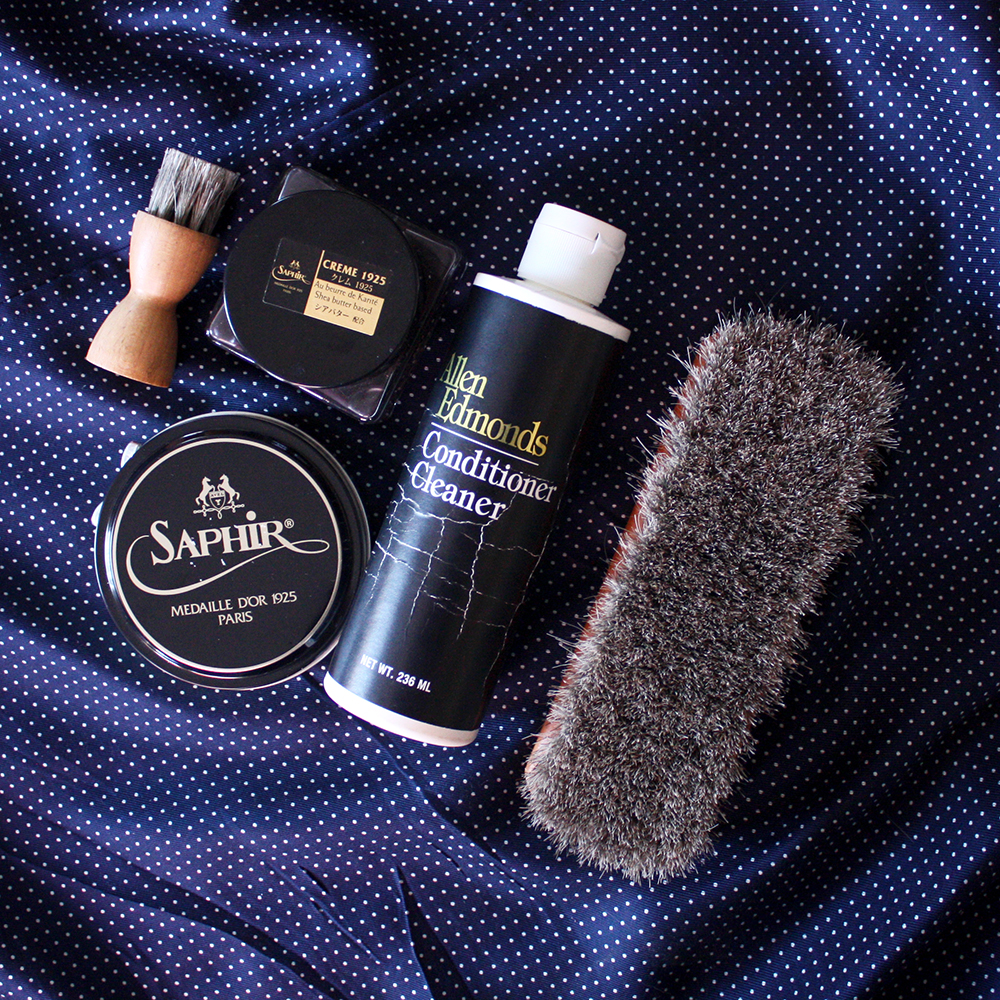
Your Most Basic Shoe Care
If you own shoes made from full-grain leather, you’ll need some basic shoe care items, such as what you see above. This should include a bottle of leather conditioner. Leather can dry out and crack over time, so you need to nourish it every once in a while to keep it supple. We recommend Bick 4 or Allen Edmonds. Shoe nerds often recommend Saphir Renovateur, but the stuff is harsh and can strip the color off your shoes if you don’t know what you’re doing.
Every basic shoe care kit should also include a bit of polish and a couple of brushes. Cream polish is useful for when you want a soft, matte finish, whereas wax is better for a higher gloss shine. Cream polish is also oilier than wax, so it helps nourish the leather, whereas wax helps build a superficial layer of protection. To apply the polish, get a dauber (a small brush). Then buy a larger horsehair brush to remove dush and build up a shine when necessary. Saphir is particularly good for polish, but you can buy brushes from your local cobbler for not much money.
Related posts: A Complete A To Z Guide On Proper Shoe Care, Should You Use Cream Or Wax Polish For Shoes?, Building A Patina, Bulling Shoes, Five Tips For Better Shoe Polishing, and Our Webisode On Shoes

For Suede Care
It can be challenging to get stains out of suede. Things just cling to the hairy nap easily. So, to make your life easier, consider coating your suede shoes every once in a while with a waterproofing spray. This stuff is downright magical. It creates a billion microscopic filaments, which stand up on their ends. Whenever liquid hits the surface — say, spilled coffee, errant pizza drippings, or dirty roadside water — the stuff just rolls right off. We recommend getting a spray that’s made without any silicone, such as Allen Edmonds’ Water Protector, Tarrago’s Nano Protector, or Saphir’s Super Invulner.
For when stains do come up, make sure you have some tools handy. Baby powder is good for lifting out oil stains. You’ll also want a suede-friendly shampoo ready, along with a gentle brush that won’t take off too much of your nap. Attack the leather with a bit of this shampoo and scrub. We recommend Saphir’s Omni’Nettoyant for these kinds of jobs. It’s expensive, but it’s surprisingly effective, will last for nearly forever, and it’s cheaper than buying a brand new pair of shoes. Some guys also like having suede erasers on hand for spot cleaning. But as you can see above, between the suede shampoo and waterproofer, I’ve hardly needed to use mine.
Related posts: How To Clean Suede Shoes, Keeping Suede Shoes Clean This Winter, How Should You Protect Your Suede Shoes?, and Please Mistreat Your Suede Shoes
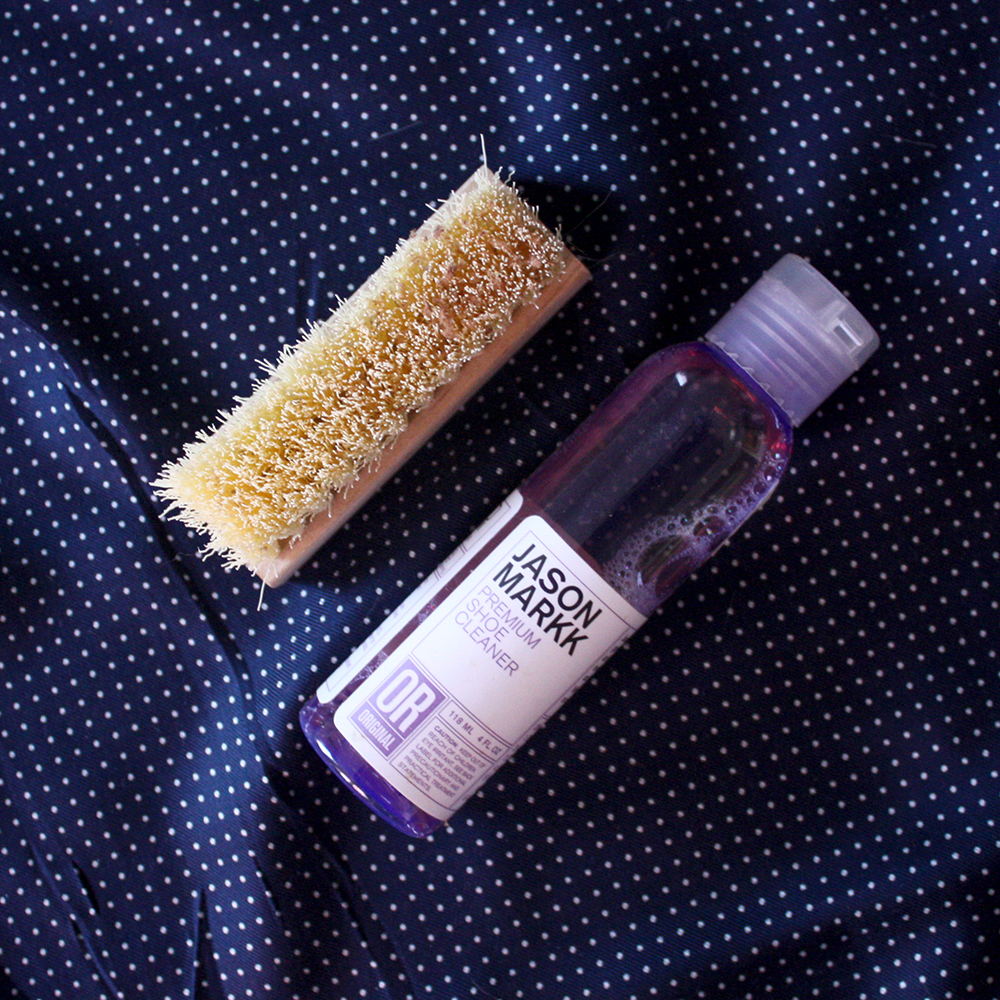
For Sneakers Of All Types
There was a time when cleaning your sneakers meant throwing them into the washer or attacking them with some random household cleaning agent (and praying your shoes didn’t get ruined in the process). Nowadays, there are just as many specialized sneaker care products as there are for dress shoes. You can find cleaners, protectors, mesh bags, microfiber towels, traveling kits, quick wipes, restoration kits, and all sorts of other specialized products.
The only thing you really need, however, is a cleaner. Years ago Jason Markk pioneered this field by coming out with the first cleaning kit specially designed for just sneakers. Since then, their success has attracted a number of competitors. In a blind test, Crep Protect edged out Jason Markk in Complex’s “Don’t Believe the Hype” show. But their tests are a little more extreme than what you’ll likely encounter in real life. In my experience, the two products perform similarly, and I tip it to Jason Markk for using less plastic packaging. Their cleaning kt is just $16 and it’s good on everything from suede to leather to canvas (which is useful since sneakers are often made from a combination of materials). The brush is also gentle enough to use on the knitted mesh uppers of Nike’s Flyknits.
Related posts: Guide To Cleaning Sneakers and How to Clean Sneakers
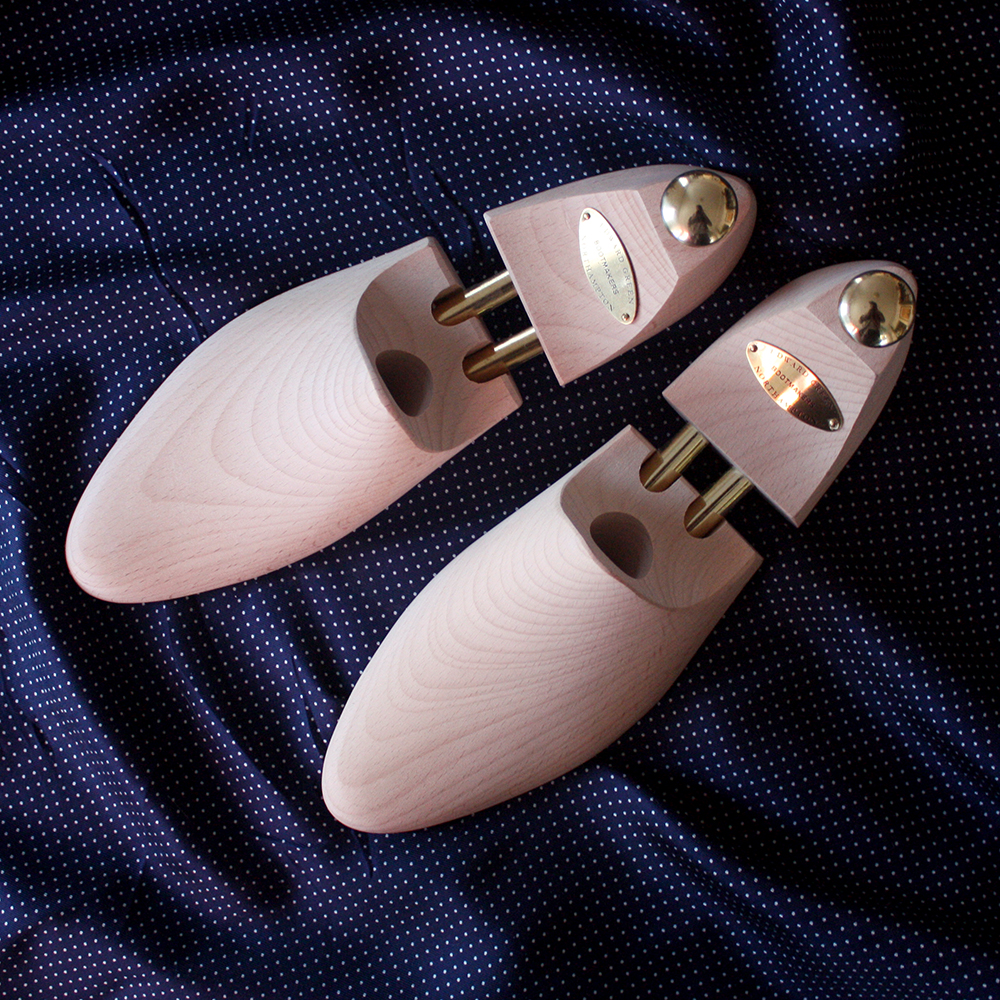
Shoe Trees
Always insert shoe trees into your shoes when you’re not wearing them. They help minimize wrinkles, prevent the toes from curling up, and generally help maintain the shape of your shoes. Some companies, such as Edward Green, will have specialized shoe trees that are shaped according to the company’s lasts (at Edward Green, it’s their 202 and 606 last). Use these when you can. Otherwise, a pair of Woodlores is fine.

A Proper Shoe Horn
Most shoes are made with a stiff plastic heel counter. If you press your foot into the back of your shoes too hard and too often, you can crush that counter and make for a complicated and expensive repair job.
To prevent this, always use a shoehorn when putting on shoes. If you don’t have a shoehorn, you can still use something like a credit card to help slide your foot in (just place the credit card between your heel and the back of the shoe). But you know … a shoehorn can be had for as little as a couple of bucks. At some stores, such as ShoeMart, they’ll also include a free shoehorn with every purchase.
Metal shoehorns are the most basic, and can be bought at any local shoe store or department store. If you want something that’s a little nicer, Abbeyhorn sells some made from shaped oxhorn. Some like longer shoehorns so they don’t have to bend down as far. Personally, I find that since I have to bend down to tie my shoes anyway, a shorter 8″ shoehorn is more practical for when you’re sitting down.
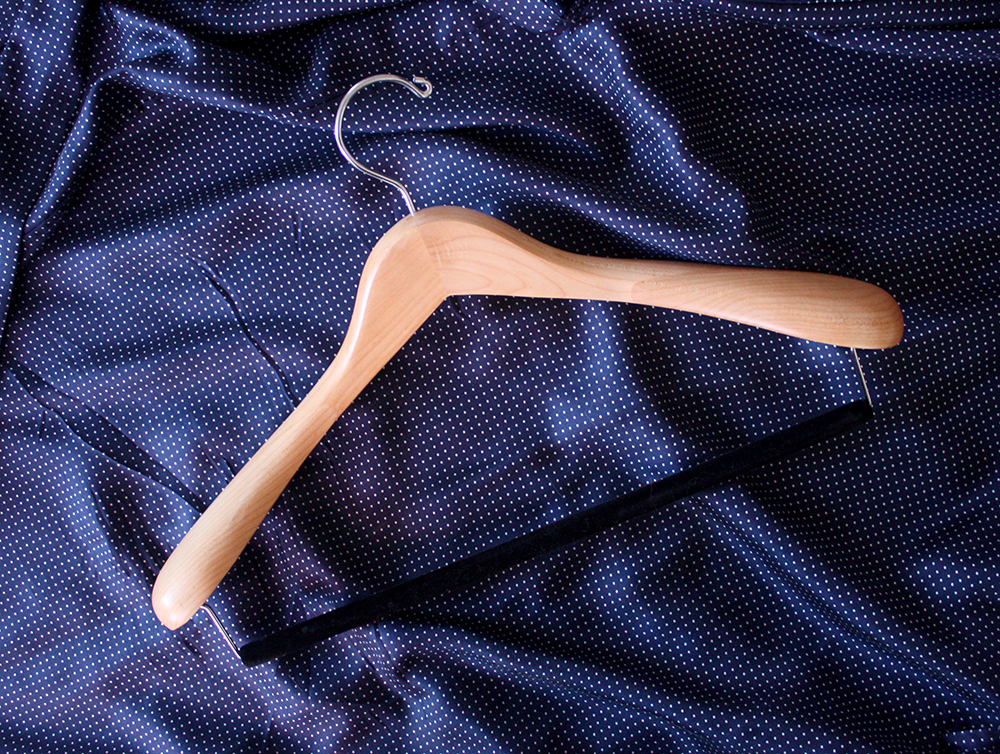
Shaped Hangers for High-End Tailoring
I know what you’re thinking: luxury hangers sound ridiculous. I thought the same for years until I spoke to a Savile Row tailor one day, who told me that improper hangers can actually ruin the shape of your suits and sport coats.
Jeffery Diduch, Vice President of Technical Design at Hickey Freeman, wrote about this at his tailoring blog, Tutto Fatto a Mano. As he shows on his site, thinner wire hangers can push the sleeves of a coat outward, which ruins the shaping of the sleeve. If left hanging long enough, those creases eventually set in and it takes a skilled presser to get them out.
Bespoke tailor Chris Despos also agrees. Over at StyleForum, he’s noted how an improper hanger can distort and even stretch out the careful shaping that goes into a well-tailored jacket. That’s why he prefers The Hanger Project’s hangers, which have a rounded neck, over the square-necked designs at Butler Luxury. “Tailors cut their undercollars and collar linens on a bias, and they shape them to fit your neck,” he writes. “The Hanger Project’s hangers have a rounder shape at the collar, which is more representative of your actual neck and better for prolonged storage. Any square shaping at the neck can distort or even stretch out the collar.”
The Hanger Projects’ hangers, however, are expensive at about $28. Wooden Hanger USA is a lot more affordable at $7, but their hangers don’t have that same forward pitch that mimics your posture (although, on the upside, that also means you can pack more into your closet). If the price is a concern, we recommend Mainetti. They have more shaping than Wooden Hanger USA, although not as much as The Hanger Project. The neck is also square, and the hangers are made from a lightweight composite material, rather than solid wood. But they’re more affordable at $86 for a pack of ten.
Note, these types of hangers are only really necessary for high-end tailoring (and specifically suit jackets and sport coats). Casual jackets don’t have the same three-dimensional shaping, so you can hang those on regular hangers.
Related posts: A Tale Of Two Hangers

Sweater Care
If you have a sweater, you’ll need a sweater shaver, as every sweater pills. Pilling is a term for the fuzzy little balls that appear around areas of high-friction. Sweaters are made from yarns, and those yarns are made from fibers. When the fibers break, they tangle into each other and form something that looks like a mini-tumbleweed. Whether you buy your knits from high-street shops or luxurious boutiques, all sweaters pill eventually — the question is just how easily and by how much. And by safely getting rid of those pills, you can turn back the clock on your favorite knits, making them look like they were just bought yesterday.
For years, we’ve recommended sweater shavers for this. They’re better than sweater stones or combs since they don’t put in new breakages in the yarn. The best sweater shaver I’ve found is actually a $12 model from Conair. You can buy fancier designs, such as Steamery for $50, but I find the differences to be more about aesthetics than performance. Conair’s has an adjustable setting at the head, which allows you to set how closely the shaver sits on your knit. The shaver is also large and easy to handle, with a transparent and removable case to hold the lint. The only downside is that the build quality doesn’t feel quite as robust, although I haven’t had any problems mine. Steamery feels more substantial in hand, but it’s more awkward to hold. It also has a USB charger, which just seems like a part you can lose.
While you’re at it, grab a bottle of Soak (or some other “no-rinse” laundry detergent). Most sweaters have to be hand-washed. No-rinse detergents produce fewer suds, but they’re no less effective than their counterparts. The only difference is that you then don’t have to rinse out the suds, which significantly cuts down on your cleaning time.
Related posts: I Dropped $100 On Sweater Shavers And Tested Each One So You Don’t Have To, How To Get Rid of Pilling, The Best Knitwear Detergent, and How To Wash A Sweater

The Amazing OxiClean
Oxiclean is about as close as you get to a staple in the laundry room. It outperforms other top-selling stain removers, and it boosts colors while also making whites brighter. It’s safe to use and doesn’t leave any residue. For truly stubborn stains, you can add a couple of scoops of this stuff to a bucket. Then just add water and leave your garments to soak overnight. Your clothes will be almost brand new after you wash them the next day. This is the secret weapon of every vintage hunter and inveterate thrifter. It’s a must if you get sweat stains easily or have kids who roll around in the grass. We’ve been recommending it for years, and it’s even science approved.
Related posts: How To Really Clean A Shirt and The Best Laundry Stain Remover







